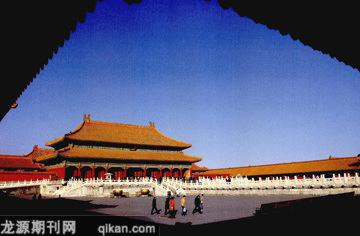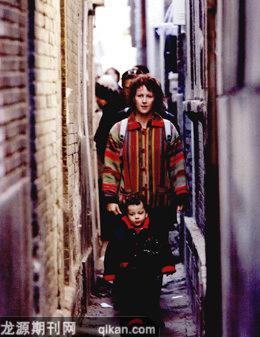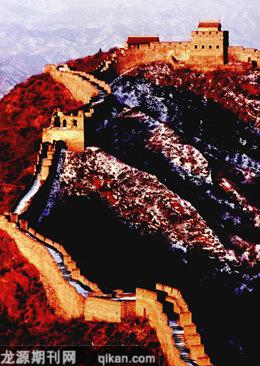Beijing’s Scenic Spots
2008-08-30BystaffreporterWANGJING
By staff reporter WANG JING

EXCEPT for a few brief interludes, Beijing has been the capital of China for hundreds of years. As such it is rich in history and tourist sights. The imperial gardens, hutongs, and surrounding natural environment are all draw cards for tourists from around the world.
Explore the
Imperial Palaces and Gardens
Listed by UNESCO (United Nations Educational, Scientific, and Cultural Organization) as a World Heritage Site in 1987, the Forbidden City, also known as the Palace Museum, is Chinas largest and best-preserved ancient structure. Surrounded by a 52-meter-wide moat and an eight-meter-high wall, the imperial complex contains buildings whose floor space amounts to 9,999 and a half bays, as counted according to ancient measurements (a bay is the space between two pilasters, which is the basic floor space unit in ancient Chinese architecture). Four unique and delicately structured turrets stand at each corner, guarding a grand but heavily fortified city.
The three major halls – the Hall of Supreme Harmony, the Hall of Central Harmony, and the Hall of Preserving Harmony – embody a strong national desire for peace and unity among the different ethnic groups that make up China. Similarly, the gates at either end of the imperial city – Tiananmen, or Gate of Heavenly Peace, and Dianmen, or Gate of Earthly Peace – imply a national desire for stability.
The best place to admire a full view of the Forbidden City is from Coal Hill, immediately to the north of the complex. As an elegant and unique imperial garden, emperors from the Yuan, Ming and Qing dynasties often visited Coal Hill to practice archery, indulge in feasts and go sightseeing. These days it has become a prime tourist attraction.
In addition, Beijings well-preserved Summer Palace is surrounded by the citys largest imperial garden.
A Stroll Through the Hutongs

The length of Beijings original 6,000 hutongs, or alleyways, was said to have been equal in length to the Great Wall, and an old adage says if the Forbidden City is Beijings heart, the hutongs are its capillaries.
The Shichahai Lake area north of the imperial palace, comprising Qianhai (Front Lake), Houhai (Rear Lake) and Xihai (West Lake, or Jishuitan), holds many of the citys remaining hutongs and quadrangles. Strolling around the area, visitors can appreciate the glimmering blue surfaces of the lakes, graceful weeping willows, twisted railings and a flower-and-tree-covered island. Pleasure boats are available for rent and the banks have ample shady places to rest.
More than 40 protected cultural sites are located here, and you can find the former residences of many important historical figures of old and new China, such as Soong Ching Ling (the wife of Sun Yat-sen, founder of the first Chinese republic), Mei Lanfang (a famous Peking Opera star), and several princes of the Qing Dynasty. Tours by pedicab are available and drivers also act as tour guides.
There are also numerous hutongs in the Dashilan area south of Tiananmen, such as Qianshi Hutong, whose northern section is less than 0.4 meters wide, and Jiuwan Hutong, a twisting alley with 13 turns. As the most distinctive ancient commercial district in Beijing, stores of long standing can be found in great numbers around this area, such as the famous Quanjude Roast Duck Restaurant. Liulichang Cultural Street is also here. The Dashilan area has recently received an Olympic facelift.

Beijings Natural Scenery
While Beijing itself is very flat, many high scenic hills surround the city, such as the Fragrant Hills and Jade Spring Hill, the most popular tourist spots on the citys outskirts.
Many of these hills are dotted with temples, temporary imperial palaces and tombs. Some also have ancient religious significance, such as the Miaofeng Mountains. In the Ming and Qing dynasties, devout people from as far away as southern China came here on pilgrimages.
These hills are also famous for their particular natural features. Jade Spring Hill is famous for its namesake spring. An imperial garden since the Liao Dynasty (907-1125), many palaces and temples were built here by successive dynasties.
Other famous spots on Beijings outskirts include Juyong Pass, one of the most famous sections of the Great Wall in China. Situated in a valley surrounded by mountains, the pass has long been a military stronghold. Also within easy reach of the capital is Dragon Bone Hill at Zhoukoudian, which became a world famous tourist spot after the fossils of “Peking Man” (from the lower Paleolithic period) and “Upper Cave Man” (from the upper Paleolithic period) were discovered here in the first half of the 20th century. The Peking Man site was listed as one of UNESCOs World Cultural Heritage Sites in 1987.
